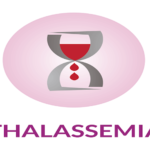More than 1.3 crore screened for NCDs at the HWCs
healthy soch
New Delhi, February 23, 2019 :
The first Health and Wellness Centre (HWC)under Ayushman Bharat was inaugurated by the Prime Minister Shri NarendraModiat Jangla inBijapur Chhattisgarh on 14thApril 2018. Since then 10,252 HWCs have been operationalized. The states of Andhra Pradesh, Tamil Nadu, Uttar Pradesh, Karnataka and Kerala lead the way with the highest number of HWCs under Ayushman Bharat. Andhra Pradesh has operationalized 1361 HWCs, Tamil Nadu 1318, UP 912, Karnataka 700 and Kerala 678 HWCs.
A total of 1,33,84,332women and men, thirty years of age and above have been screened for common Non Communicable Diseases (NCDs) at these HWCs. The status of universal NCD screening,newly identified positive cases and individuals on treatment at HWCs is as follows:
| Condition | Screened for Common NCDs | New Identified Positive | On -Treatment |
| Hypertension | 1,30,03,064 | 9,01,994 | 22,69,192 |
| Diabetes | 97,78,916 | 8,90,663 | 12,13,860 |
| Oral Cancer | 71,85,388 | 13,747* | 1495 |
| Breast Cancer | 16,67,090 | 12,098* | 1848 |
| Cervical Cancer | 12,26,799 | 11,923* | 872 |
The National Health Policy, 2017 recommended strengthening the delivery of primary health care, through establishment of “Health and Wellness Centers” (HWCs) as the platform to deliver Comprehensive Primary Health Care (CPHC).
Ayushman Bharat has two components which are complementary to each other. Under its first component, 1,50,000 existing Sub- Health Centres (SHCs) and Primary Health Centres (PHCs) will be transformed to Health & Wellness Centres (HWCs) to deliver Comprehensive Primary Health Care (CPHC), that is universal and free to users, with a focus on wellness and the delivery of an expanded range of services close to the community. The wide range of services provided at these Health and Wellness Centres will encompass maternal and child health services, communicable and non-communicable diseases, services for the elderly and palliative care including free essential drugs and diagnostic services.
An expanded range of services will be provided at the HWCs, with the level of complexity of care at the PHC being higher than at that at SHC. States will also have the flexibility to expand the service package to address problems of local importance as defined by disease prevalence and community feedback.
In the urban context, the Urban Primary Health Centres or Urban Health Posts where they exist, would be strengthened to deliver comprehensive primary health care. The norm of One Multipurpose worker MPW-(F) per 10,000 population supported by four-five ASHAs, will enable outreach services, preventive and promotive care and home and community-based services. Therefore, in the urban context, the team of ANM and ASHA would be considered to equivalent to a frontline provider team with the first point of referral being the UPHC catering to about at 50,000 populations.
HWC at the sub centre level are being staffed by suitably trained Mid- Level Health Provider (MLHP), also called as Community Health Officers (CHO) – who is a BSc/GNM Nurse or an Ayurveda Practitioner trained in primary care and public health skills and certified in a six months Certificate Programme for in Community Health. The training programme is being rolled out through IGNOU and State specific Public/Health Universities. 133 IGNOU Programme Study Centres (PSCs) in various district hospitals and 90 other PSCs under the state specific Certificate Programmes in the state of Maharashtra, Tamil Nadu, Gujarat and West Bengal have been notified, taking the total of Programme Study Centres to 223 PSCs across the country.
All basic and post-basic nursing colleges and universities have been recently notified to integrate the training of MLHPs in their existing curriculum of nursing. This will enable production of 1,12,546 candidates annually that will be eligible to become CHOs. A total of 77691 ASHAs, 20024 MPWs/ANMs, 3837 Staff Nurses and 3548 PHC Medical Officers (1,05,100 in all) have been trained, so far. 3,54,22,026 individuals have been empaneled at HWCs.
Ayushman Bharat (AB), is India’s path to Universal Health Coverage. It signifies a move from selective health care to the delivery of a comprehensive range of services spanning preventive, promotive, curative (both outpatient and hospitalization) rehabilitative and palliative care. It aims to undertake path breaking interventions to holistically address health at primary, secondary and tertiary level. It is perhaps the single most important reform measure of Government of India, to address the major challenges of increasing prevalence of chronic diseases, high out of pocket expenses, and fragmented care delivery.
healthysoch







